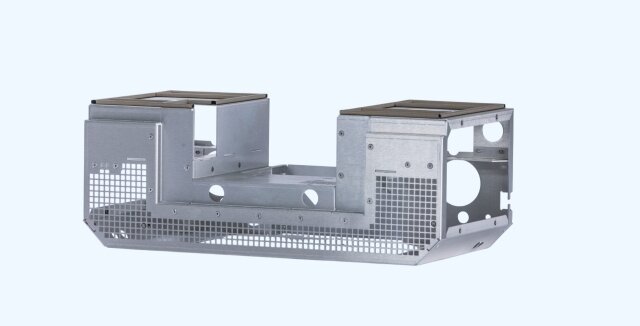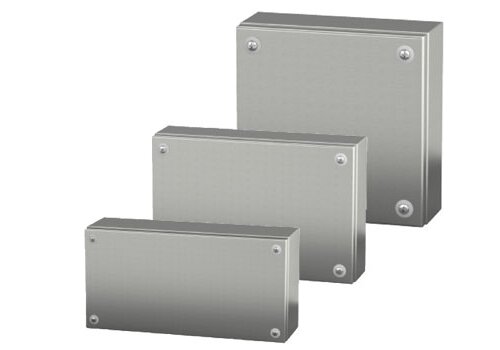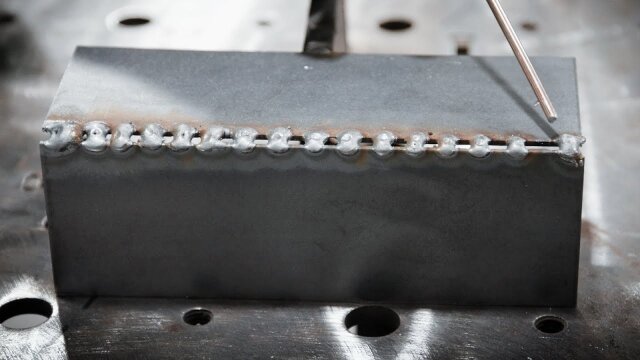CNC 가공은 정밀한 부품을 만드는 좋은 방법이지만, 작은 세부 사항을 간과하면 비용이 빠르게 증가할 수 있습니다. 많은 엔지니어와 디자이너는 기능과 외형에 집중하지만 디자인 선택, 재료 선택, 가공 방법이 시간과 예산에 미치는 영향을 놓치는 경우가 많습니다. 신중한 계획이 없으면 단순한 부품도 결국 비용이 많이 들 수 있습니다.
이 글에서는 품질 저하 없이 CNC 가공 비용을 절감할 수 있는 실용적인 방법을 살펴봅니다. 설계 변경, 재료 선택, 툴링 방법, 시간과 비용을 절약하는 공정 개선에 대해 설명합니다. 작은 변화가 가공에 어떤 영향을 미치는지 확인함으로써 정밀하고 비용 효율적인 부품을 만들 수 있습니다.
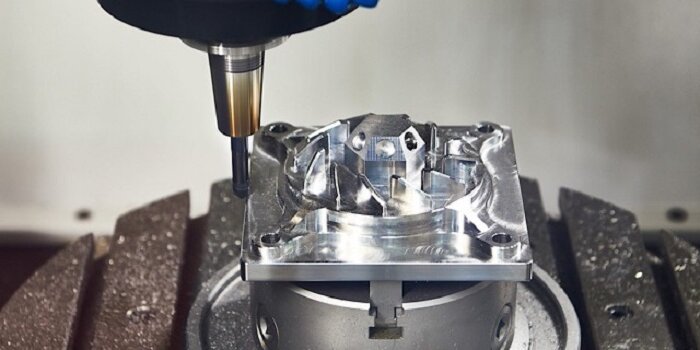
1. 표준 도구 크기 사용
표준 공구 크기를 사용하는 것은 CNC 가공 비용을 절감하는 쉬운 방법입니다. 사용자 지정 또는 비정상적인 공구는 추가 설정이 필요하고 프로그래밍 시간이 오래 걸리며 마모도 더 빠릅니다. 이 모든 것이 생산 비용을 증가시킵니다. 표준 공구는 널리 사용 가능하고 저렴하며 대부분의 기계에 적합합니다. 표준 공구를 사용하면 기공사가 공구를 더 적게 교체하고 가동 중단 시간을 줄이면서 더 빠르게 작업할 수 있습니다.
부품을 설계할 때는 구멍 지름, 반경, 슬롯을 표준 공구 크기에 맞춰야 합니다. 예를 들어 2mm, 4mm, 6mm 또는 10mm의 구멍에는 표준 드릴 비트와 엔드밀을 사용합니다. 비표준 크기는 맞춤형 커터나 리밍이 필요할 수 있으므로 시간과 비용이 증가합니다.
내부 모서리에도 동일한 아이디어가 적용됩니다. 날카로운 모서리에는 작은 엔드밀이 필요하며, 이는 더 느리게 절단되고 더 빨리 마모됩니다. 표준 커터 반경에 맞는 더 큰 필렛을 사용하면 더 부드럽고 빠르게 가공할 수 있습니다. 또한 공구 수명이 연장되어 교체 비용이 절감됩니다.
2. 비임계 허용 오차 완화
공차가 엄격하면 CNC 가공 비용이 증가합니다. 더 느린 절삭, 더 많은 패스, 추가 검사가 필요합니다. 또한 높은 정밀도에는 특수 장비와 지속적인 보정이 필요합니다. 부품에 극도의 정확도가 필요하지 않은 경우, 가치를 더하지 않는 성능에 비용을 지불하는 것입니다.
공차의 미세한 차이도 시간과 비용에 영향을 줄 수 있습니다. 예를 들어 공차가 ±0.1mm인 구멍은 표준 공구를 사용하고 이송 속도를 높일 수 있습니다. 공차가 ±0.02mm로 더 좁으면 공구를 더 많이 교체하고 세심하게 측정해야 하므로 시간이 더 오래 걸리고 공구가 더 빨리 마모됩니다.
설계 시 중요한 피처와 중요하지 않은 피처를 구분하는 데 도움이 됩니다. 중요한 피처에는 샤프트, 베어링 시트 또는 결합 부품과 같이 착용감에 영향을 미치는 표면이 포함됩니다. 외부 모서리, 슬롯 또는 커버와 같이 중요하지 않은 피처는 종종 공차가 느슨할 수 있습니다. 이러한 공차를 완화하면 부품의 기능을 유지하면서 가공 속도를 높일 수 있습니다.
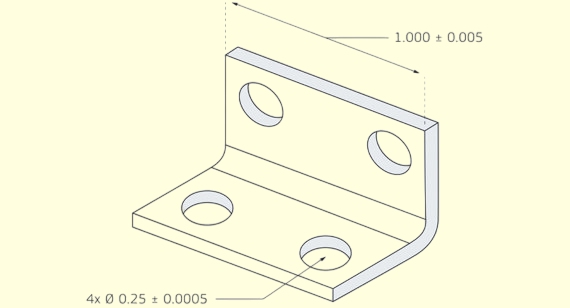
3. 모든 내부 모서리 반경
날카로운 내부 모서리는 가공에 더 많은 시간과 비용이 소요됩니다. CNC 공구는 둥글기 때문에 완벽하게 날카로운 모서리를 절단하려면 추가 패스 또는 더 작은 커터가 필요합니다. 작은 커터는 더 느리게 움직이고 더 빨리 마모되어 가공 시간과 공구 비용이 증가합니다. 내부 반경을 추가하면 더 빠르고, 더 부드럽고, 더 효율적으로 가공할 수 있습니다.
반경을 표준 엔드밀 크기에 맞추는 것이 가장 좋습니다. 예를 들어, 포켓의 반경 5mm는 10mm 엔드밀로 한 번의 부드러운 패스로 절단할 수 있습니다. 이는 날카로운 모서리에 더 작은 공구를 사용하는 것보다 더 빠릅니다. 그 결과 사이클이 빨라지고 공구 마모가 줄어들며 표면 조도가 일관되게 유지됩니다.
내부 반경이 넓을수록 공구 수명도 연장됩니다. 모서리가 빡빡하면 커터에 더 많은 스트레스와 열이 발생합니다. 둥근 모서리는 이러한 응력을 줄여 공구를 더 오래 날카롭게 유지합니다. 따라서 교체 비용이 절감되고 생산 공정 전반에서 부품 일관성이 향상됩니다.
4. 포켓 깊이 제한
포켓이 깊을수록 가공에 더 많은 시간과 비용이 소요됩니다. 포켓이 깊을수록 커터가 재료를 제거하는 데 더 많은 패스가 필요합니다. 각 패스는 가공 시간, 공구 마모 및 설정 복잡성을 추가합니다. 깊이가 공구 직경의 3배를 초과하면 공구의 안정성이 떨어지고 휘어질 수 있습니다. 이로 인해 정확도와 표면 조도가 저하되고 심지어 파손될 수 있습니다.
포켓이 얕을수록 가공 속도가 빨라지고 정밀도가 높아집니다. 설계할 때 전체 깊이가 정말 필요한지 고려하세요. 포켓 깊이를 몇 밀리미터만 줄이면 성능에 영향을 주지 않으면서 시간을 크게 절약할 수 있습니다. 무게를 줄이려면 깊은 캐비티 대신 더 얇은 벽이나 계단식 포켓을 고려하세요.
공구 길이도 중요합니다. 공구가 길면 약하고 진동이 심해져 절삭 속도가 느려집니다. 포켓을 적당한 깊이 한도 내에서 유지하면 기공사는 더 짧고 단단한 공구를 사용할 수 있습니다. 이렇게 하면 정확도, 표면 조도, 속도가 향상됩니다.
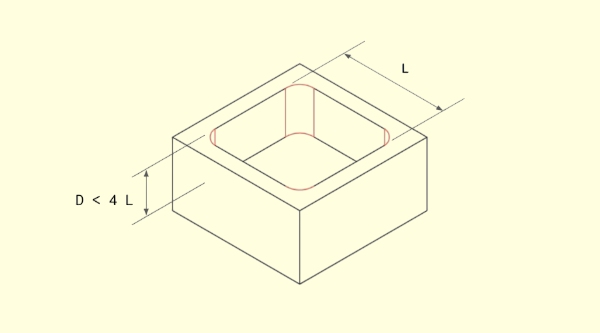
5. 얇은 벽 두껍게 만들기
얇은 벽은 디자인에서는 보기 좋을 수 있지만 가공 비용이 많이 듭니다. 깨지기 쉬운 벽은 절단 중에 진동하거나 구부러질 수 있습니다. 따라서 기계 작업자는 이송 속도를 늦추고, 더 가볍게 절단하고, 더 많은 패스를 수행해야 합니다. 패스가 추가될 때마다 시간, 노동력, 비용이 추가됩니다.
벽이 두꺼울수록 강성이 높아집니다. 절삭 압력 하에서 부품이 안정적으로 유지되면 기공사는 더 빠른 속도와 더 깊은 절삭을 사용할 수 있습니다. 따라서 효율성이 향상되고 공구 수명이 연장됩니다. 금속의 경우 최소 1.5~2mm의 벽이 좋은 출발점입니다. 더 부드러운 소재는 구부러지거나 뒤틀리는 것을 방지하기 위해 더 두꺼운 벽이 필요할 수 있습니다.
벽이 얇으면 공차 문제도 발생할 수 있습니다. 공구가 절단할 때 벽이 구부러져 두께가 고르지 않거나 치수 정확도가 떨어질 수 있습니다. 벽이 두꺼우면 치수가 안정적으로 유지되고 재작업이나 추가 마감의 필요성이 줄어듭니다.
6. 키 큰 기능 단순화
세로로 길거나 얇은 피처는 디자인에서는 보기 좋을 수 있지만, 가공하기에는 복잡하고 비용이 많이 듭니다. 피처가 베이스에 비해 높을수록 절단 시 안정성이 떨어집니다. 진동, 진동음, 공구 처짐이 발생하여 표면 조도가 나빠지고 정확도가 떨어질 수 있습니다. 기공사는 종종 절삭 속도를 낮추고 더 가벼운 패스를 수행해야 하므로 시간과 비용이 증가합니다.
키가 큰 기능은 가능한 한 짧고 튼튼하게 유지하세요. 높이와 두께의 비율을 약 4:1로 제한하는 것이 좋은 가이드라인입니다. 예를 들어, 두께가 4mm인 벽은 높이가 16mm를 넘지 않아야 합니다. 더 높은 디자인이 필요한 경우 리브, 거셋 또는 점진적인 테이퍼를 추가하여 벽을 강화하세요. 이러한 조정을 통해 강성이 향상되고 더 빠르고 안정적인 가공이 가능합니다.
공구 도달 범위도 또 다른 문제입니다. 긴 공구는 유연하고 휘어져 고르지 않은 절삭을 유발할 수 있습니다. 이를 보완하기 위해 기공사는 이송 속도를 늦추고 얕은 패스를 여러 번 수행해야 합니다. 이는 시간과 공구 마모를 증가시킵니다. 더 짧은 피처를 설계하면 더 짧고 단단한 공구를 사용할 수 있어 정확도가 향상되고 진동이 줄어듭니다.
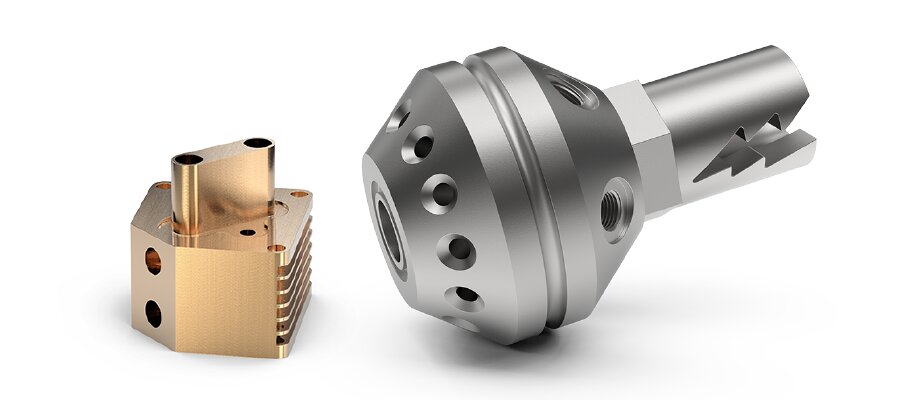
7. 머신 설정 최소화
부품의 위치를 변경하거나 다시 고정할 때마다 가공 속도가 느려집니다. 각 설정은 정밀도를 유지하기 위해 정렬, 보정 및 점검이 필요합니다. 이로 인해 시간이 걸리고 오류나 공차 편차의 위험이 증가합니다. 더 많은 설정은 더 많은 비용을 의미합니다.
한 번의 설정으로 또는 최소한의 위치 변경으로 가공할 부품을 설계합니다. 한쪽 또는 양쪽에서 접근할 수 있는 기능이 가장 쉽습니다. 복잡한 부품의 경우 개별적으로 가공한 다음 조립할 수 있는 더 간단한 구성 요소로 나누는 것이 좋습니다. 이렇게 하면 가공 시간이 단축되고 정확도가 향상되며 인건비가 절감됩니다.
다축 CNC 기계는 재클램핑 없이 여러 면에 도달할 수 있으므로 도움이 될 수 있습니다. 하지만 5축 기계는 시간당 가격이 더 비쌉니다. 디자인이 이를 정당화하는 경우에만 사용하세요. 동일한 평면에서 구멍이나 슬롯을 정렬하는 것과 같은 사소한 조정은 표준 3축 기계에서 추가 설정을 제거할 수 있습니다.
8. 단일 표면 마감 지정
한 부품에 여러 표면 마감 처리를 하면 가공 시간과 비용이 증가합니다. 각 마감에는 별도의 공구 경로, 추가 패스가 필요하며 때로는 추가 공구 또는 세련. 마감재를 전환하면 생산 속도가 느려지고 노동력, 설정 및 검사 시간이 늘어납니다. 일관된 단일 마감재를 사용하면 가공이 간소화되고 비용이 절감됩니다.
디자인할 때 높은 정밀도나 매끄러움이 필요한 표면을 결정하고 해당 마감을 균일하게 적용합니다. 기능이나 외관에 영향을 미치지 않는 다른 영역은 동일한 마감 처리를 공유할 수 있습니다. 이렇게 하면 추가 작업을 피하면서 중요한 부분의 품질을 유지할 수 있습니다.
표면 정삭을 표준화하면 공구 선택과 절삭 속도에도 도움이 됩니다. 기공사는 이송과 속도를 최적화하여 부품 전체에 일관된 정삭을 구현하고 공구 마모와 오류를 줄일 수 있습니다. 또한 품질 검사가 더 쉬워지고 대량 생산에서 반복 가능한 결과를 보장할 수 있습니다.
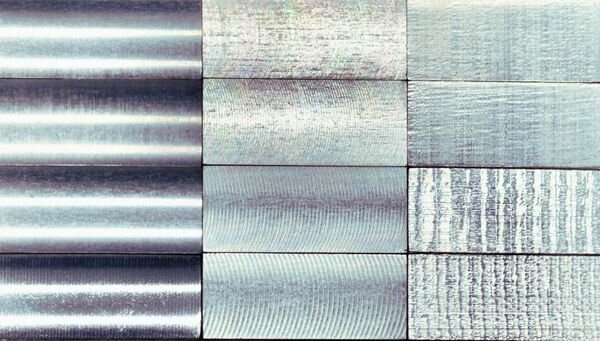
9. 자유 가공 재료 선택
올바른 소재를 선택하면 CNC 가공 비용에 큰 영향을 미칠 수 있습니다. 자유 가공 소재는 쉽게 절삭되고 칩이 적게 생성되며 공구가 더 느리게 마모됩니다. 더 빠른 이송과 더 깊은 절삭이 가능하므로 사이클 시간이 단축되고 효율성이 향상됩니다. 더 단단하거나 이질적인 금속은 가공 속도가 느려지고 공구가 더 빨리 마모되며 더 많은 패스가 필요하므로 비용이 증가합니다.
금속의 경우 자유 가공 알루미늄, 황동 또는 특정 강철이 좋은 옵션입니다. 이러한 합금에는 칩 파손을 개선하고 열 축적을 줄이는 첨가제가 포함되어 있습니다. 가공이 더 매끄럽고 예측 가능하므로 공구 손상이나 부품 결함의 위험이 줄어듭니다.
자유 가공 재료는 유지보수 및 가동 중단 시간도 줄여줍니다. 칩이 더 작은 조각으로 부서져 청소가 더 쉬워지고 공구 플루트에 쌓이는 것을 방지합니다. 따라서 기계가 효율적으로 작동하고 지속적인 검사나 공구 교체 필요성이 줄어듭니다.
10. 기능하지 않는 텍스트 제거
기능을 제공하지 않는 텍스트, 로고 또는 표시는 CNC 비용을 증가시킬 수 있습니다. 조각 또는 에칭 공구 경로와 가공 시간이 추가되고 생산 속도가 느려집니다. 각 패스마다 공구가 마모되고 더 많은 검사가 필요할 수 있습니다. 불필요한 텍스트를 제거하면 복잡성이 줄어들고 사이클 시간이 단축됩니다.
부품 번호, 조립 참조 또는 중요 라벨과 같은 필수 표시에 집중하세요. 기능적 또는 규정상의 목적이 아니라면 장식적인 조각이나 로고는 피하세요. 텍스트 영역을 단순화하면 기계공이 더 빠른 피드와 일관된 공구 사용을 유지하여 인건비와 툴링 비용을 절감할 수 있습니다.
필요한 모든 텍스트를 한 곳에 배치하면 설정이 더욱 간편해집니다. 여러 면에 각인하는 대신 접근하기 쉬운 하나의 표면에 텍스트를 결합하세요. 이렇게 하면 위치 변경을 최소화하고 기계 가동 중단 시간을 줄이며 오정렬이나 오류의 위험을 줄일 수 있습니다.
CNC 부품을 더 비용 효율적으로 만들려면 어떻게 해야 할까요? CAD 파일을 보내주세요.에 문의하면 엔지니어가 설계를 검토하여 시간을 절약하고 비용을 절감할 수 있는 방법을 찾아드립니다. 재료, 공차 및 가공 전략에 대한 실용적인 조언을 제공합니다. 파일과 질문을 다음 주소로 보내주세요. [email protected]에 문의하시면 저희 팀이 프로젝트에 가장 적합한 솔루션을 찾을 수 있도록 도와드리겠습니다.
안녕하세요, 저는 케빈 리입니다

지난 10년 동안 저는 다양한 형태의 판금 제작에 몰두해 왔으며 다양한 워크숍에서 얻은 경험에서 얻은 멋진 통찰력을 이곳에서 공유했습니다.
연락하세요

케빈 리
저는 레이저 절단, 굽힘, 용접 및 표면 처리 기술을 전문으로 하는 판금 제조 분야에서 10년 이상의 전문 경험을 갖고 있습니다. Shengen의 기술 이사로서 저는 복잡한 제조 문제를 해결하고 각 프로젝트에서 혁신과 품질을 주도하는 데 최선을 다하고 있습니다.


